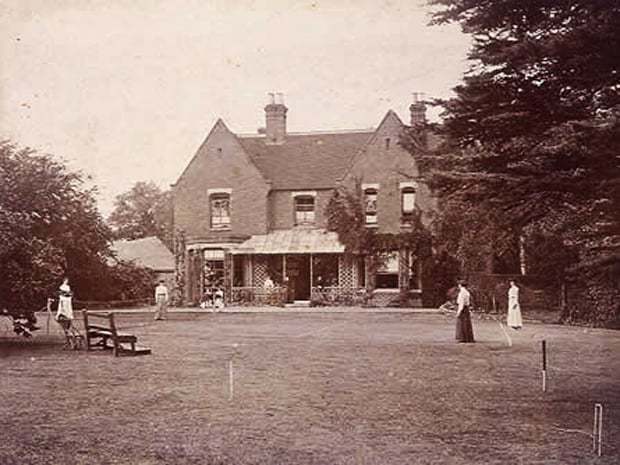Famed psychic researcher Harry Price once described Borley Rectory as ‘the most haunted house in England.’ Borley is a small village near the town of Sudbury in England, and the rectory was built for the Reverend Henry Bull (nicknamed ‘Carlos’) in 1863. The property was destined to be haunted from the very beginning, as it was on the site of an old monastery. Locals already knew about the Sorrowful Nun on the Nun’s Walk.
According to legend, the woman was apparently a nun from Bures Convent who fell in love with a monk from Borley Monastery (built in 1362). They tried to elope but were caught and executed along with the coachman who sought to help them. Apparently, the woman was walled up in the cellar of the monastic buildings; the monk was hanged, and the coachman beheaded.

The Bull Hauntings
The first unusual events happened soon after the Bull family moved in. Several locals recalled hearing mysterious and unexplained footsteps in the Rectory. Henry Bull added an extra wing to the already large building in 1875. P. Shaw Jeffrey visited the house in 1885 and claimed to have witnessed stones thrown by an invisible entity along with other paranormal activity. In the same year, a respected former headmaster said he saw a ghostly nun on several occasions.
Over the course of several years, various visitors reported seeing the nun peering in at them through a window. The sightings became so frequent and frightening that Bull had the window bricked up. Reverend Bull died in the rectory’s Blue Room in 1892, and his son Henry Junior took over. To avoid confusion with his father, the son was called ‘Harry.’
In 1900, three of the female members of the Bull family saw a ghostly figure walking down what later became known as the Nun’s Walk. Another sister arrived, and the four women tried to greet the stranger only to find that the apparition disappeared. Harry also claimed to have seen the nun and a phantom coach. The ghost was far from shy, as she was routinely seen wandering around the grounds dressed in gray. Some witnesses said they saw the nun and monk walking together.
Harry followed in his father’s footsteps in more than one way; he died in the Blue Room in 1927. Borley Rectory remained vacant for several months although a local carpenter swore he saw the nun at the gate on four separate occasions. Future occupants were not as resilient as the Bull family.

